MARKET OVERVIEW
The Anti-Decubitus Dynamic Mattresses Market plays a crucial role in addressing the healthcare challenges associated with pressure ulcers and bedsores, presenting innovative solutions for patients with limited mobility and healthcare facilities seeking to enhance patient care and comfort. These specialized mattresses have gained prominence in the healthcare industry due to their unique design and functionality, which focuses on preventing and treating pressure ulcers, a common issue among immobile or bedridden patients.
One vital aspect of healthcare is the prevention and management of pressure ulcers, also known as bedsores. Pressure ulcers can cause significant pain and discomfort to patients, leading to prolonged hospital stays, increased healthcare costs, and reduced quality of life. In this context, anti-decubitus dynamic mattresses have emerged as a pivotal solution to combat the issue of pressure ulcers.
While the global anti-decubitus dynamic mattresses market is on an upward trajectory, it faces several challenges. These include the high cost of advanced mattresses, the need for skilled personnel to operate and maintain them, and disparities in access to healthcare.
Nonetheless, these challenges also present opportunities for innovation and growth. The development of more cost-effective solutions, increasing investment in healthcare infrastructure, and the expansion of healthcare services in emerging economies can address these issues and further drive market expansion.
The global anti-decubitus dynamic mattresses market is a thriving sector within the broader healthcare industry, offering a crucial solution to the prevention and management of pressure ulcers. Driven by demographic shifts and the pursuit of enhanced patient care, this market's growth is projected to remain robust. As the market continues to evolve, it will undoubtedly play a pivotal role in improving patient outcomes and reducing the burden of pressure ulcers in healthcare settings worldwide.
Global Anti-Decubitus Dynamic Mattresses market is estimated to reach $2,088.8 Million by 2030; growing at a CAGR of 4.7% from 2023 to 2030.
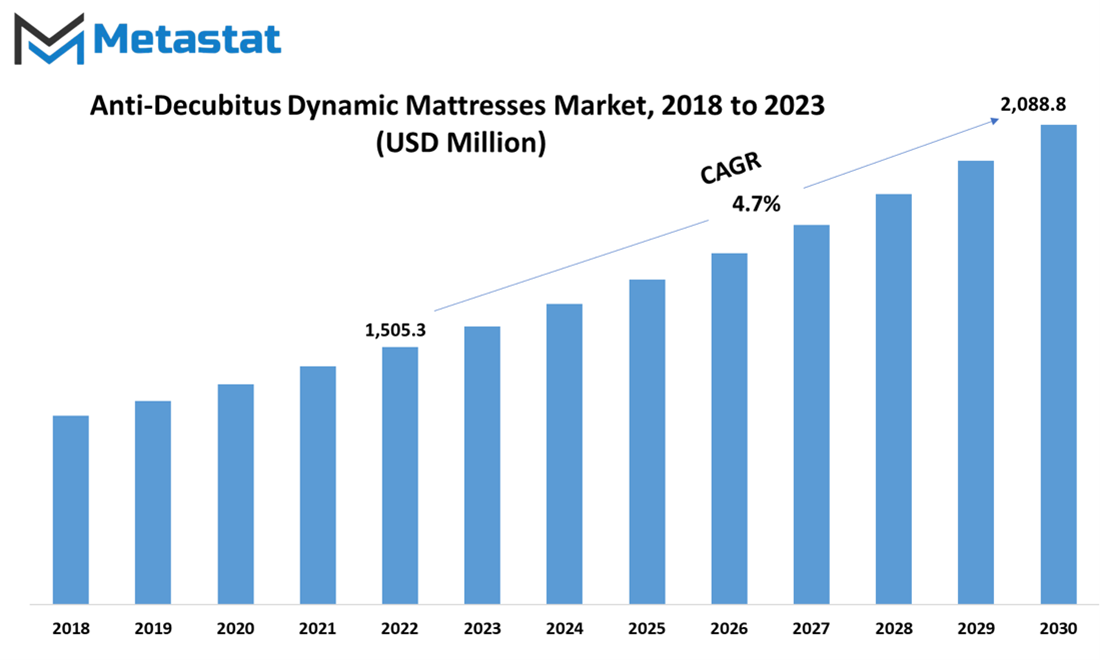
GROWTH FACTORS
The healthcare industry is witnessing a surge in demand for anti-decubitus dynamic mattresses. These specialized medical-grade mattresses have gained prominence due to their ability to alleviate the suffering of patients with conditions such as pressure ulcers, back pain, and bed sores. In this article, we explore the market drivers, restraints, and opportunities in the Anti-Decubitus Dynamic Mattresses market, shedding light on the factors influencing its growth.
A significant driver of the market is the growing demand for home treatment of pressure ulcers. These ulcers are often a painful consequence of patients being confined to their beds for extended periods, typically due to critical illnesses. In response to this, medical professionals are seeking effective solutions to relieve the pain and discomfort experienced by these patients. Anti-decubitus dynamic mattresses have emerged as an ideal product to address this issue, offering benefits for both patients and caregivers. These medical-grade mattresses are equipped with adjustable pressure settings and utilize cyclic inflation and deflation to distribute the body's weight evenly, effectively preventing pressure ulcers. These features have fueled demand in home clinics and residential rehabilitation centers, where these mattresses are proving to be invaluable tools in patient care.
Another notable driver is the increasing use of anti-decubitus mattresses for patients with spinal cord injuries. Such injuries often lead to back pain and bed sores, which can be excruciating for patients. Anti-decubitus mattresses have emerged as a popular choice for managing these conditions, offering an alternative treatment avenue for hospitals and clinics. The rising incidence of spinal cord injuries, often stemming from accidents, has contributed to the growing demand for these mattresses. These mattresses provide much-needed relief to patients, further propelling the market's growth potential.
High Costs of Product and Maintenance: While the benefits of anti-decubitus dynamic mattresses are clear, their high costs present a significant challenge to their widespread use. The premium features of these mattresses, including adjustable pressure settings and advanced technology, make them relatively expensive. Factors contributing to their high pricing structure include the use of specialty materials in production, high procurement costs, fluctuations in material pricing, and complexities in shipping and transport. Additionally, levies on raw material transportation further increase production costs, ultimately resulting in a premium price tag for the mattresses. The high initial costs, combined with the expenses related to maintenance and additional accessories, may deter some medical care facilities from adopting these mattresses, potentially limiting their market growth.
Surge in the Elderly Population: An opportunity for the Anti-Decubitus Dynamic Mattresses market lies in the global surge of the elderly population. Both developed and emerging countries are witnessing a significant increase in geriatric demographics. As these countries grapple with the challenge of caring for their elderly population, who often suffer from various ailments and immobility, there is a growing willingness to invest in specialized old-age medical care items. Anti-decubitus dynamic mattresses have emerged as a solution to alleviate the pain experienced by elderly individuals who cannot move voluntarily. This trend creates new opportunities for companies operating in the Anti-Decubitus Dynamic Mattresses market, particularly in areas with high geriatric populations. The mattresses' effectiveness in relieving back pain and bed soreness through innovative features like automated shape adjustment using air pumps and micro-sized air holes makes them an appealing option for manufacturers and opens new avenues for product sales and business expansion.
The Anti-Decubitus Dynamic Mattresses market is driven by the increasing demand for home treatment of pressure ulcers and their rising use for patients with spinal cord injuries. However, the high costs associated with these mattresses pose challenges to their widespread adoption. On the other hand, the surge in the elderly population offers a significant growth opportunity for manufacturers and businesses in the Anti-Decubitus Dynamic Mattresses market, as these mattresses prove to be effective in addressing the unique needs of elderly individuals in terms of pain relief and comfort.
MARKET SEGMENTATION/REPORT SCOPE
By Product Type
The global mattress market is a diverse landscape, encompassing various product types to meet the ever-growing demand for comfort and quality sleep. Among these products, the market further segments into specific categories, each with its unique characteristics and value. In this regard, the mattress market categorizes itself into Foam Mattresses, Air Cushion Mattresses, and Others.
The Foam Mattresses segment, valued at 660.8 USD Million in 2021, holds a prominent place in the market. These mattresses are known for their adaptability and support, offering users a restful night's sleep. The foam used in these mattresses contours to the body, providing a personalized and comfortable sleep experience. They are particularly favored for their ability to relieve pressure points, making them an excellent choice for those with specific sleep preferences or physical discomfort.
Another significant segment is the Air Cushion Mattresses, which raked in a value of 571.6 USD Million in 2021. These mattresses operate on a unique premise - they use air as the primary support system. Air cushion mattresses allow users to customize the firmness level to suit their preferences. This adjustability is one of their key selling points, as it can accommodate the needs of different individuals sharing a bed. Air cushion mattresses are also known for their durability and potential relief for back pain and other sleep-related issues.
The market further diversifies with the "Others" segment, valued at 147.6 USD Million in 2021. This category includes mattresses that do not fall into the foam or air cushion types. It's a catch-all category that houses a variety of other mattress types, such as innerspring, latex, or hybrid mattresses. The diversity in this segment caters to consumers with specific preferences, whether it's the bounce of an innerspring mattress, the natural material of a latex mattress, or the combination of features in hybrid mattresses.
The mattress market, segmented by product type, showcases a range of options to meet the varied needs and preferences of consumers. Foam mattresses offer personalized comfort, air cushion mattresses provide adjustability, and the "Others" category accommodates those seeking different attributes in their mattresses. As the demand for quality sleep continues to rise, the market's ability to diversify and innovate within these segments becomes crucial in meeting the diverse requirements of consumers worldwide.
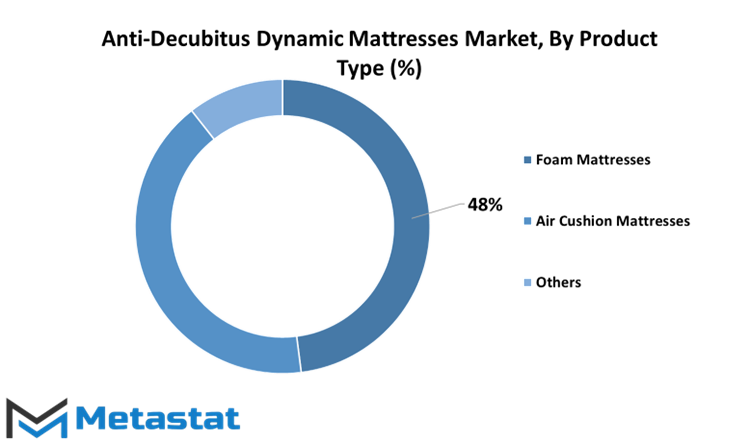
By End-Users
The Anti-Decubitus Dynamic Mattresses Market is a dynamic landscape with various end-users, each contributing to its growth in distinctive ways. In 2021, the market witnessed notable segmentation in end-users, primarily comprising Hospitals, Nursing Homes, and Others.
Hospitals played a significant role in this market, with a valuation of 1248.1 thousand units in 2021. These medical facilities are at the forefront of patient care, often dealing with patients who require anti-decubitus dynamic mattresses due to their extended stays and specific medical conditions. The demand from hospitals stems from the necessity to provide optimal comfort and pressure relief for patients to prevent pressure ulcers, also known as bedsores.
Nursing Homes, another crucial end-user segment, contributed significantly to the market with a valuation of 775.2 thousand units in 2021. Nursing homes cater to a unique demographic of patients, typically the elderly, and individuals with chronic health issues. The necessity for anti-decubitus dynamic mattresses in nursing homes is driven by the need for long-term care and the prevention of pressure ulcers, a common concern in this demographic.
The market also accommodates an "Others" segment, valued at 263.1 thousand units in 2021. This category is diverse, encompassing various end-users outside the hospital and nursing home settings. It includes personal home care, rehabilitation centers, and other healthcare facilities that require these specialized mattresses for the comfort and well-being of patients.
These end-user segments signify the diverse applications of anti-decubitus dynamic mattresses in the healthcare landscape. The demand is fueled by the need to prevent and alleviate the discomfort and health risks associated with prolonged bedridden conditions, making these mattresses a vital component in modern healthcare settings. As the healthcare industry continues to evolve and expand, the role of anti-decubitus dynamic mattresses in ensuring patient comfort and well-being is expected to grow, further underlining their significance in the healthcare ecosystem.
REGIONAL ANALYSIS
In the evaluation of the global Anti-Decubitus Dynamic Mattresses market, the geographical perspective plays a crucial role. This perspective aids in understanding the market's regional dynamics and the distribution of its value across the world. Starting with North America, the Anti-Decubitus Dynamic Mattresses market in this region had an estimated value of 468 million USD in 2017. This signifies the economic significance of these specialized mattresses in providing support and comfort to individuals in need.
Meanwhile, Europe, as another integral segment, holds a substantial share in the global Anti-Decubitus Dynamic Mattresses market. As of 2021, Europe accounts for approximately 33.5% of the total market. This statistic underscores the widespread adoption and utility of these mattresses in the European context.
These geographical insights offer a glimpse into the regional disparities and the varying degrees of market maturity across different parts of the world. It's clear that the demand for Anti-Decubitus Dynamic Mattresses is not uniform but rather contingent on regional factors, including healthcare infrastructure, awareness, and population demographics. This segmentation based on geography provides valuable information for businesses and policymakers seeking to engage with this market on a global scale.
COMPETITIVE PLAYERS
The global Anti-Decubitus Dynamic Mattresses industry, based on geography, involves numerous key players. One prominent company operating in this sector is LINET spol. s.r.o. This organization, among others, contributes significantly to the dynamic mattress market's dynamics and growth.
LINET spol. s.r.o. is a notable player in this industry, known for its innovation and dedication to patient care. The company specializes in producing a range of dynamic mattresses designed to prevent and manage pressure ulcers, a critical concern in healthcare. These mattresses employ advanced technology to provide alternating pressure, ensuring even weight distribution and reducing the risk of pressure sores.
LINET's presence extends across the globe, with a focus on enhancing patient well-being. They understand that the prevalence of pressure ulcers is a global issue, impacting patients across various regions and healthcare settings. As a key player, they address this concern by offering solutions that cater to the diverse needs of patients and healthcare facilities worldwide.
LINET's commitment to innovation and quality is vital in the Anti-Decubitus Dynamic Mattresses industry. Their products are developed with the aim of not only preventing pressure ulcers but also improving patient comfort and promoting faster recovery. This aligns with the industry's overarching goal of providing advanced and effective solutions for patient care.
In addition to LINET, there are other key players operating in various regions around the world. Each of these companies plays a crucial role in advancing the Anti-Decubitus Dynamic Mattresses industry by offering solutions that cater to specific geographic markets. This diversity of players and their regional focus underscores the industry's adaptability and responsiveness to the unique healthcare needs in different parts of the world.
Anti-Decubitus Dynamic Mattresses Market Key Segments:
By Product Type
- Foam Mattresses
- Air Cushion Mattresses
- Others
By End-Users
- Hospitals
- Nursing Home
- Others
Key Global Anti-Decubitus Dynamic Mattresses Industry Players
- LINET spol. s.r.o.
- Talley Group Ltd
- Apex Medical Corp.
- Hill-Rom Holdings, Inc.
- Drive DeVilbiss Sidhil Ltd.
- Malvestio Spa
- Stryker Corporation
- Arjo AB
- Permobil
- Carilex Medical Group
- Rober Limited
- EHOB
- Benmor Medical
WHAT REPORT PROVIDES
- Full in-depth analysis of the parent Industry
- Important changes in market and its dynamics
- Segmentation details of the market
- Former, on-going, and projected market analysis in terms of volume and value
- Assessment of niche industry developments
- Market share analysis
- Key strategies of major players
- Emerging segments and regional growth potential




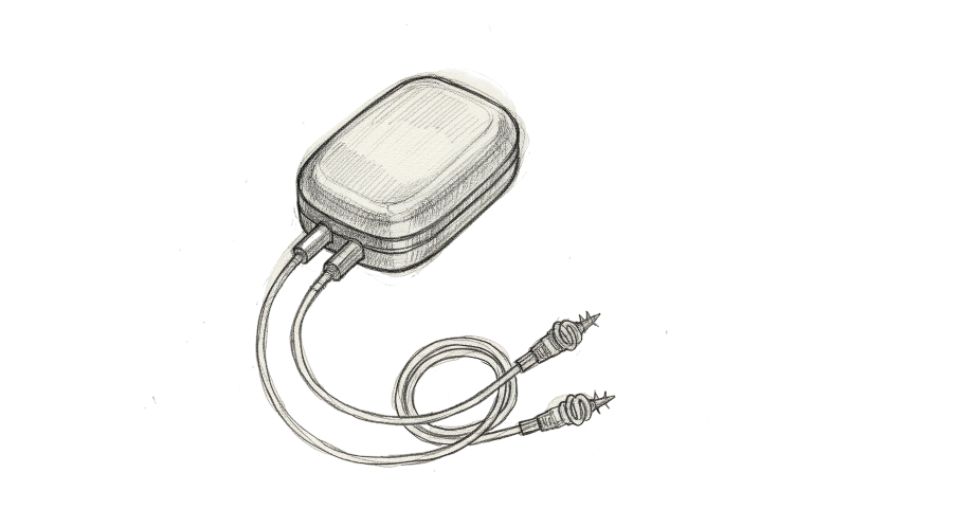
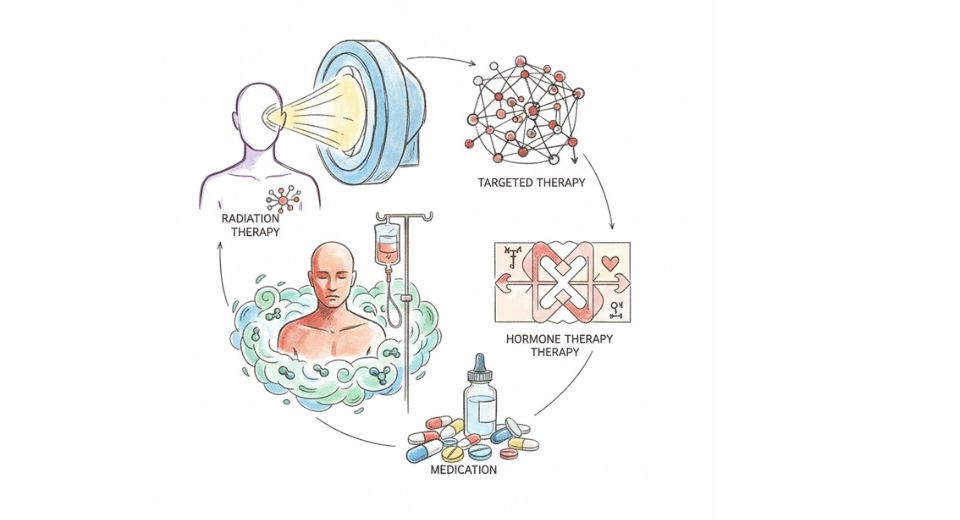
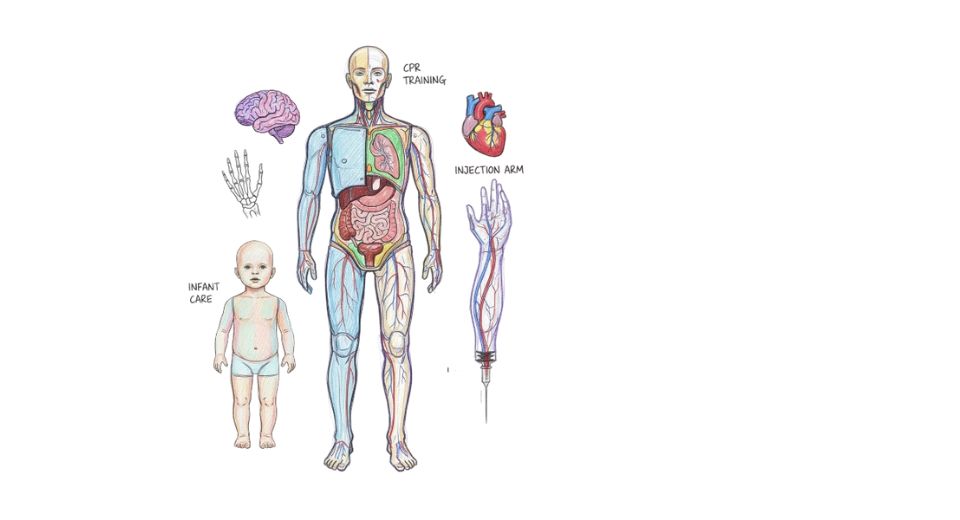

 US: +1 3023308252
US: +1 3023308252






